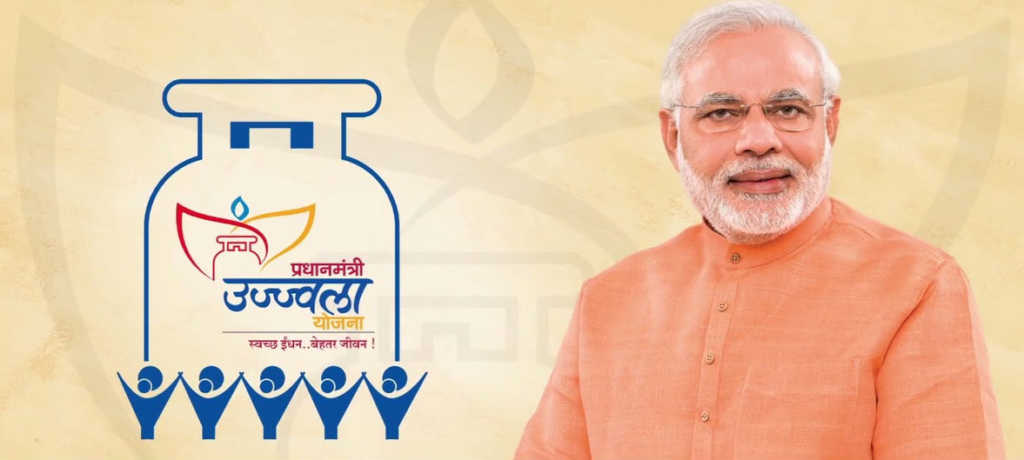On 1st May 2016 , Prime minister Shree Narendra Modi launched Pradhan Mantri Ujjwala Yojana (PMUY) in Ballia, Uttar Pradesh. The objective was crystal clear – Under it 5 Cr LPG connections were to be provided to BPL families with a support of Rs. 1600 per connection in the next 3 years. With the clear intent of empowering women, the connections were to be issued in the name of women of the households. 8000 Cr budget was earmarked for this project.
Over to 15th Jul 2017, President Pranab Mukherjee handed over cooking gas connection to Gauri Sarkaar at her residence in Jangipur, West Bengal which took the number of free connections provided under the Pradhan Mantri Ujjwala Yojana (PMUY) scheme so far to 2.5 crore.
Between last may till this July , what is left is awe worthy statistics and example of execution at par excellence
- 50% of the target HHs has already been achieved in 15 months flat!
- The scheme has covered 1.6 crore poor households, topping the target set for the entire 2016-17 financial year
- Ujjwala has raised the number of Scheduled Caste and Scheduled Tribe households with LPG connection to 35% of the total LPG coverage in the country.
- It has raised national the LPG coverage from 61% as of January this year to 70% as of December 1.
- LPG consumption by households has reached 19 million tonne, registering an annual growth rate of 10%.
The Ujjwala scheme has turned India into an example for energy experts from other emerging economies still struggling to provide clean fuel to their rural folks. No wonder the World LPG Association (WLPGA) — so far focused on developed economies — has chosen to hold its Asia summit in Delhi, bringing together 600 experts from 35 countries who want to learn from Ujjwala.
Pradhan Mantri Ujjwala Yojana: The background
India is home to more than 24 Crore households out of which about 10 Crore households are still deprived of LPG as cooking fuel and have to rely on firewood, coal, dung – cakes etc. as primary source of cooking. The smoke from burning such fuels causes alarming household pollution and adversely affects the health of Women & children causing several respiratory diseases/ disorders. As per a WHO report, smoke inhaled by women from unclean fuel is equivalent to burning 400 cigarettes in an hour. In addition, women and children have to go through the drudgery of collecting firewood.
Pradhan Mantri Ujjwala Yojana: The modus operendi
Behind every success immaculate planning and effort is involved and PMUY’s success story is no different.
It started with LPG distributors were asked to eliminate duplicate accounts; after which, through a high-pitched #GiveItUp campaign led by the prime minister, over 1.5 crore families were encouraged to give up their subsidies. This was then followed up with income ceilings, beyond which households were denied subsidies. Just getting rid of 3.34 crore fake/duplicate customers allowed the government to save over 21,000 crore over FY15 and FY16.
In other words, Ujjwala is the classic example of transferring subsidies from the undeserving to the truly deserving.
Under the scheme each household is being provided a financial assistance of ₹1,600. The upfront payment required for an LPG connection is waived so as to make the scheme more attractive.
The BPL families are identified in consultation with the governments of States and Union Territories.
Pradhan Mantri Ujjwala Yojana: The beneficiary
They are healthier, their homes are cleaner and they have more time to themselves, say most beneficiaries of the Pradhan Mantri Ujjwala Yojana, the Centre’s flagship scheme to provide LPG connections to below-poverty-line households.
A survey undertaken by financial consulting firm MicroSave in 12 districts of eastern, central and western Uttar Pradesh, revealed that nearly all of the beneficiaries of the scheme switched to cooking on gas as soon as the LPG cylinders were made available.
For women, who are the chief beneficiaries of the scheme, the assessments revealed that cooking on gas stoves helped save at least 1-2 hours daily, which they used for leisure activities or other household pursuits. This was partly because cooking on gas was faster, and because it saved them the time and effort needed to go out to collect firewood.
“They reported spending time chatting with their neighbours, resting, or even doing other household work,” said Manoj Sharma, Director, MicroSave Asia.
The survey also revealed that women found their houses to be cleaner now, in the absence of smoke emissions that would earlier come with using biomass and firewood, staining their utensils and roofs with soot.
The lack of smoke had also reduced health problems in women, such as burning sensation in the eyes, coughing and even headaches.
“Most beneficiaries were very satisfied with the scheme,” said Sharma, adding that the enrolment of applicants was also smooth and orderly, and took just about 10-15 days for every eligible family.
Needless to suggest that this scheme’s ambition is being complemented exceedingly well on ground execution. The credit lies with oil minister Dharmendra Pradhan and his efficient team in his ministry for this stupendous success .
However one can’t help but marvel at the boldness of Mr. Modi’s vision of new India which takes care of even those who are at the bottom of the pyramid and neither his astute timing of launch of this scheme with international crude prices at its lowest in almost a decade. Indeed this fine balance between what is required with what is possible makes Ujjwala truly a game changer.
